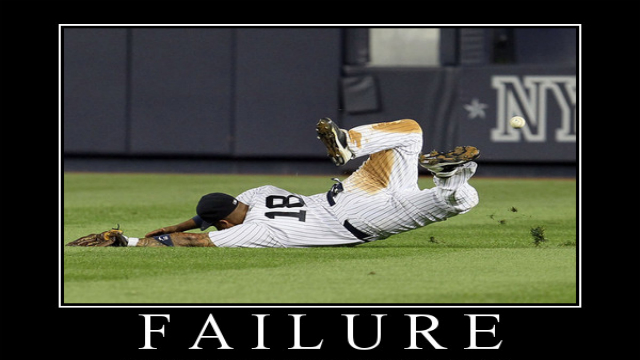The Science of Creativity in 2013: Looking Back to Look Forward

In 1950, the American psychologist Joy P. Guilford delivered a lecture to the American Psychological Association (APA) calling for a scientific focus on creativity. Psychology knew little about creativity at the time. Years earlier, during WWII, the Air Force commissioned Guilford, then a psychologist at USC, to identify pilots who would respond to emergencies with original insights to save themselves and the plane. IQ was a popular measurement but it did not capture the type of thinking that generated novel solutions to urgent predicaments. Studying pilots led Guilford to a few insights he shared with his colleagues at the APA in 1950. First, creativity is not equivalent to intelligence. Second, divergent thinking is central to the concept of creativity. Third, we can develop tests to measure divergent thinking skills. Guilford’s remarks encouraged questions the academy is still having today: What is the relationship between creativity and intelligence? How do we measure creativity? And what, exactly, is creativity?
Unfortunately, Guilford’s ideas did not give rise to widespread research in creativity. Psychologists neglected the domain throughout the second half of the 20th century with notable exceptions including Dean Keith Simonton, Howard Gardner, Teresa Amabile and Mihaly Csikszentmihalyi. It was a fringe subject because no one saw any practical applications; acquiring grant money was therefore difficult.
The 21st century is witnessing a renaissance in creativity in both the lab and the pages of popular books and magazines. “Creativity is a topic at many conferences and many grad students are getting excited about the subject,” says Scott Barry Kaufman, Adjunct Assistant Professor of Psychology at New York University. “2012 was a good year for creativity research, journals devoted to creativity published a lot of great work and other fields weighed in.”
The most newsworthy research came from cognitive psychologists researching creativity “boosters”. Jennifer Wiley’s lab at the University of Illinois at Chicago found that a certain dose of alcohol helped participants solve tricky word problems. Mareike Wieth and Rose Zacks demonstrated that undergrads were better at solving insight-based problems when they tested during their least optimal time. This means that night owls did better in the morning while morning larks did better in the afternoon. Counter-intuitive findings like these scattered psychology journals and made for catchy headlines in the press.
The neuroscience of creativity is flourishing. In 2008 the journal PNAS published a paper by researchers from the University of Michigan demonstrating that participants who played a difficult working memory game known as the n-BACK task scored higher on tests of a fundamental cognitive ability known as fluid intelligence: the capacity to solve new problems, to make insights and see connections independent of previous knowledge. In other words, the task made people smarter. Oshin Vartanian,Adjunct Assistant Professor at the University of Toronto-Scarborough, explained that a lot of researchers are excited about this finding. “The 2008 paper has had a profound effect on how creativity researchers think about creativity. Now scientists are working on replicating the results and figuring out if intelligence gained from the n-BACK task transfers to other domains.” The hope is that “cognitive training” will help children and adults boost creative output. “The application of this research is probably the most exciting idea in the cognitive science and neuroscience of creativity,” says Vartanian.
Cognitive flexibility, the ability to switch between thinking about two concepts or consider multiple perspectives simultaneously, is also a popular topic in the neuroscience world. Darya Zabelina, a graduate student at Northwestern University who studies creativity informed me that, “a lot of people are studying cognitive flexibility from a lot of different perspectives. It will be one of the topics researchers will continue to focus on in 2013.”
Paul Silvia is a Professor of Psychology at the University of North Carolina who researches creativity and aesthetics, among other topics. According to Silvia, “film and creativity is going to become popular; maybe music and creativity as well.” He is currently working on a paper co-authored with Emily Nusbaum that looks at unusual aesthetic states such as awe, the chills, and crying.
Countless popular psychology books that either focused on or mentioned creativity were published in 2012. Susan Cain lambasted brainstorming and “GroupThink” in her bestseller and introvert manifesto Quiet. Drawing on a wide body of robust research she reminded our hyper social world that working alone is usually better than working in groups in terms of productivity and creativity. Dan Ariely’s book The Honest Truth About Dishonesty contains a chapter on the relationship between dishonesty and creativity – honesty might not be good for creativity. The Power Of Habit by Charles Duhigg made some important suggestions for creativity: if you’re in a rut, try changing your routine. The elephant in the room is Jonah Lehrer’s Imagine: The Science of Creativity, which the public gobbled up. Scientists in the field rightly expressed concerns about how Lehrer portrayed and interpreted some of the science but they are also happy that good science writers are attracted to the field. Unfortunately, Lehrer got pegged for plagiarizing and inventing Bob Dylan quotes. Kaufman said it best: “When people started doubting the veracity of that book, they started doubting the veracity of the science.”
Given that the relationship between the science of creativity and the media will continue to evolve, it will be interesting to see how the media’s portrayal of creativity affects the research. Starting with Gladwell’s Blink or Levitt and Dubner’s Freakonomics, the public began to expect counter-intuitive results from cognitive science. Now we live in an era where readers of science books on human nature expect clever psychological studies to explain every nook and cranny of our complex nature. This trend is good because it gets otherwise uninterested lay readers excited about cognitive science; Thinking Fast and Slow, Incognito, and others were bestsellers. However, the popularity of these books maycreate a bad system of incentives for researchers, in which researchers are motivated to publish results just to create a stir at the expense of sound research techniques and less provocative but more important research. (There’s nothing wrong with provocative results of course. Done properly, counter-intuitive findings are vital to any field because they force us to think differently.)*
I’d like to see more researchers active online in the future. My educated guess is that only about one percent of cognitive scientists (professors, grad students, etc.) are blogging or tweeting. This is a problem for three reasons. First, the Internet is an excellent medium for spreading information, including research papers. Consider a project by Melissa Terras, the Co-Director of the UCL Centre for Digital Humanities. She put 26 of her articles originally published in refereed journals online for free via UCL’s Open Access Repository. She wrote blog posts and used Twitter to promote them. It helped. “Most of my papers, before I blogged and tweeted them, had one to two downloads, even if they had been in the repository for months (or years, in some cases). Upon blogging and tweeting, within 24 hours, there were on average seventy downloads of my papers.”
Second, pseudoscience, “neurobabble,” and folk psychology flourish on the Internet. We need more experts to set the record straight. “The hard part,” Silvia told me, “is many professors aren’t good at doing that. It’s just not natural for us to ‘grab’ the public.” Not everyone is Carl Sagan or Neil DeGrasse Tyson, but it’s counterproductive for scientists to trench themselves in the academy. I hope creativity researchers will continue to make a larger online presence in 2013. We need them to keep writers like me honest.
Third, we need researchers to help promote the science of creativity to a wider audience. “I know a lot of really careful, good researchers in the field of the neuroscience of creativity, but no one is talking about them,” Kaufman tells me. “These thoughtful researchers should think about writing for the popular sphere and writers should pay attention to them more. There is so much exciting stuff going on in the field of creativity that most popular books don’t address.”
I’m optimistic about next year. Creativity researchers will continue to produce great research and improve our understanding of creativity as well as methods to measure it. In the spirit of Ken Robinson’s celebrated TED talk (now with over 13 million hits) we should broaden our conception of creativity; it is diverse and anyone can tap into it, even adults. Science writers will continue to write about creativity and the general public will continue to enjoy reading about it. Let’s strengthen the relationship between the academy and the journalism world, keeping in mind how we can use social media to promote the science of creativity and correct misconceptions about it (i.e., that people either are or not ‘creative’). This is important for education, where creativity research is especially useful, although it has implications for every industry.
It’s unclear where, exactly, the science of creativity will go next year, but the most interesting discoveries surely await us.
Full disclosure, Scott is also my colleague at The Creativity Post.
* This paragraph reiterates a point I made in collaboration with Dave Nussbaum, a Professor of Psychology at the University of Chicago, on a previous post.





